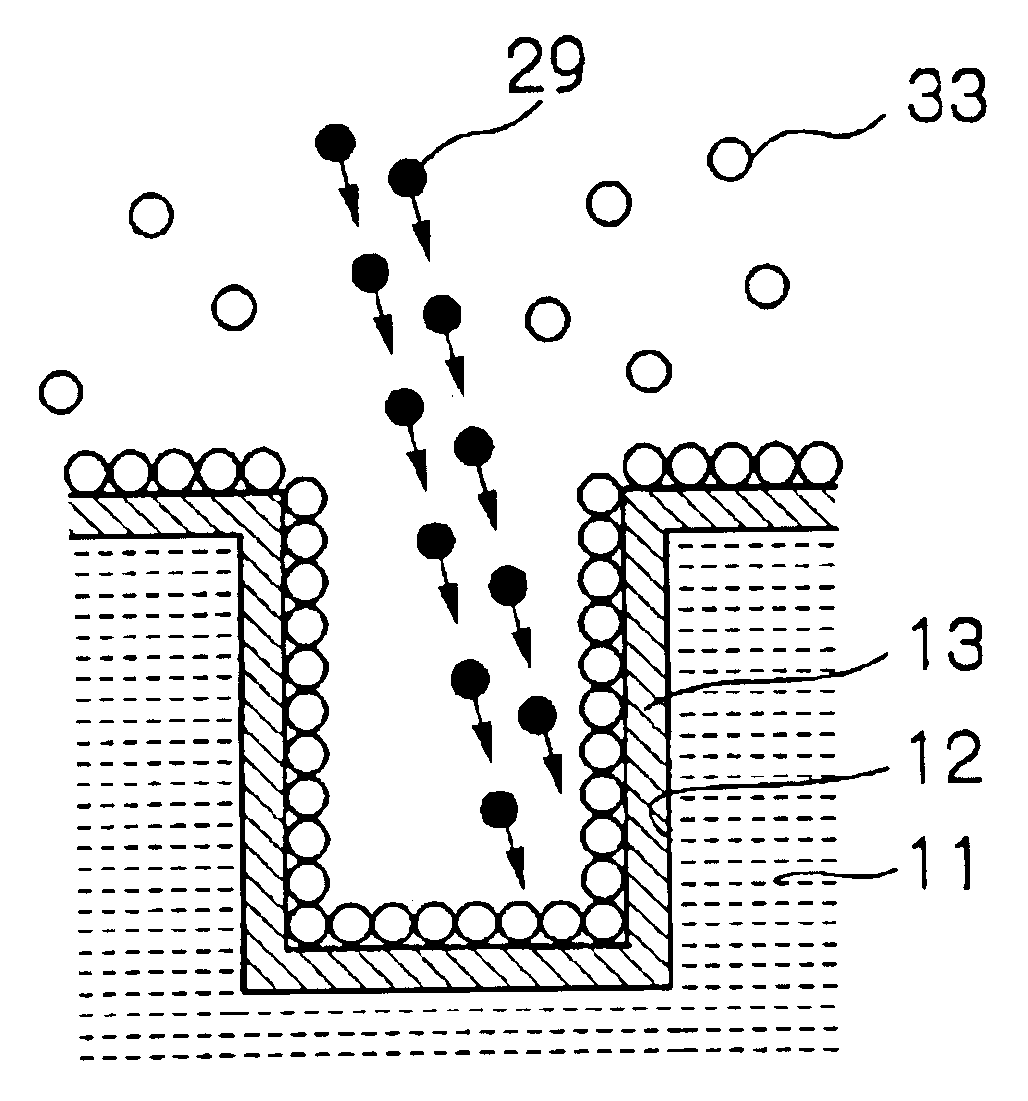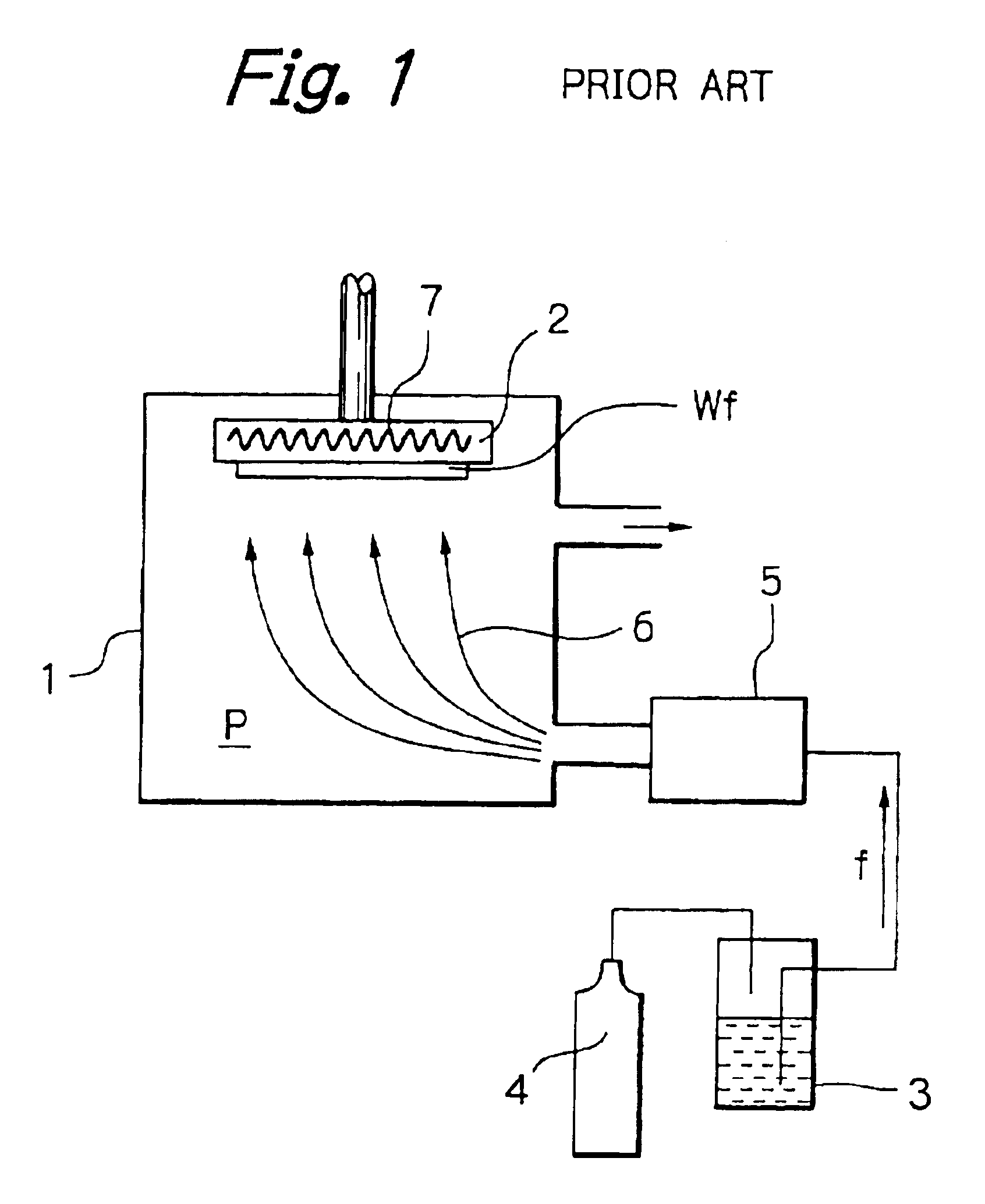Coating, modification and etching of substrate surface with particle beam irradiation of the same
a technology of etching and substrate surface, applied in the field of surface treatment technology, can solve the problems of copper-based conductors, voids or seams in copper filled recesses, and the interlayer insulative film layer of silicon oxide and an aluminum-based conductor is confronted with serious problems, and achieves favorable adhesion (bond) strength, high adhesion (bond) strength, and high bond strength.
- Summary
- Abstract
- Description
- Claims
- Application Information
AI Technical Summary
Benefits of technology
Problems solved by technology
Method used
Image
Examples
Embodiment Construction
[0104]Preferred embodiments of the present invention will now be described in detail with reference to the attached drawings.
[0105]FIG. 9 is a schematic diagram illustrating an exemplary configuration of a coating apparatus of CVD technology according to the present invention. In FIG. 9, reference numeral 21 designates a reaction chamber which has a susceptor 22 arranged therein for loading / holding a substrate Wf thereon, and an exhaust port 32 of the reaction chamber 21 is connected to a vacuum evacuation system equipped with a vacuum pump or the like so as to be decompressed to a specified pressure. Reference numeral 23 designates a source container for containing a liquid source, from which the liquid source is sent to a vaporizer 26 by supplying H2 gas from an H2 reservoir 24 via a flow controller 25 to the source container 23, so as to be vaporized in the vaporizer 26 and then to be supplied into the reaction chamber 21 as a source gas 27.
[0106]Reference numeral 28 designates a...
PUM
| Property | Measurement | Unit |
|---|---|---|
| particle energy | aaaaa | aaaaa |
| temperature | aaaaa | aaaaa |
| roughness | aaaaa | aaaaa |
Abstract
Description
Claims
Application Information
 Login to View More
Login to View More - R&D
- Intellectual Property
- Life Sciences
- Materials
- Tech Scout
- Unparalleled Data Quality
- Higher Quality Content
- 60% Fewer Hallucinations
Browse by: Latest US Patents, China's latest patents, Technical Efficacy Thesaurus, Application Domain, Technology Topic, Popular Technical Reports.
© 2025 PatSnap. All rights reserved.Legal|Privacy policy|Modern Slavery Act Transparency Statement|Sitemap|About US| Contact US: help@patsnap.com



